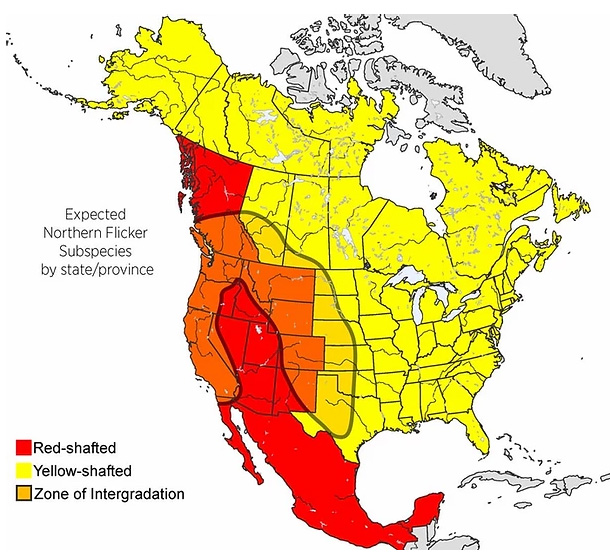
Distribution map
I returned to look for the extremely late season Northern Parula and intergrade Northern Flicker that I saw yesterday. I didn't find the Northern Parula, and while a Northern Flicker flew overhead in the same area where I saw one yesterday, I didn't get a good enough look for a photo or a good visual. When I got home, I read an email from Paul Glass suggesting that the Northern Flicker might more likely be a normal yellow-shafted with some red coloring as a result of ingesting honeysuckle berries. I hadn't considered this, and did some research. There are several articles on the internet, and here's a link to one of them:
Quote from the article: "At first, ornithologists thought that genes from the reddish western birds had propogated through the Yellow-shafted population, all the way to the Atlantic coastline. But that explanation didn't fit quite right. These red feathers weren't as red as those farther west, nor were they the salmon pink of the hybrids. They were more "coppery," and nobody could explain why."
So I thought to do some comparisons of my own with photos I have taken of red-shafted Northern Flickers, and here is a distribution map and a few of my photos.

Distribution map
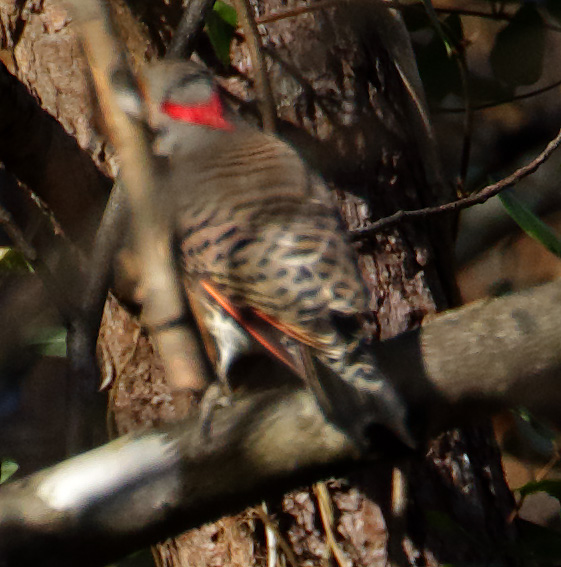
Intergrade(?) Northern Flicker; Crozet; yesterday
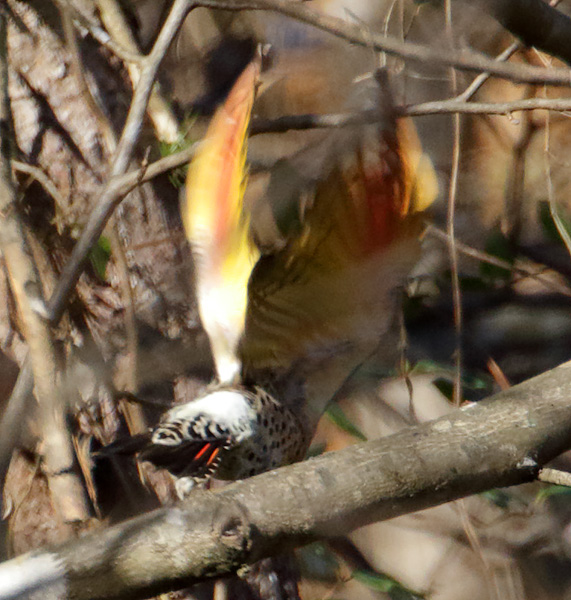
Intergrade(?) Northern Flicker; Crozet; yesterday
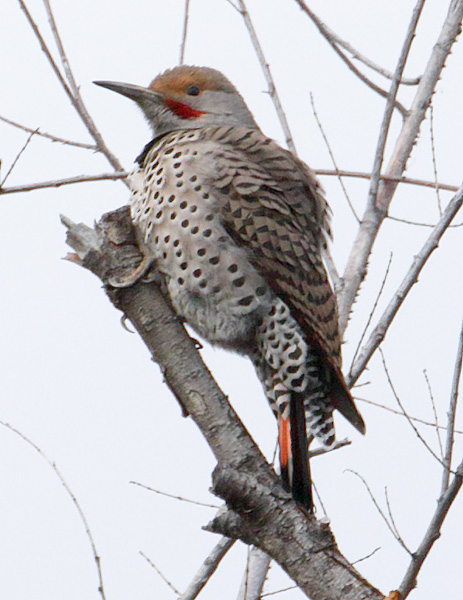
Red-shafted Northern Flicker; Patagonia, AZ; January 2017
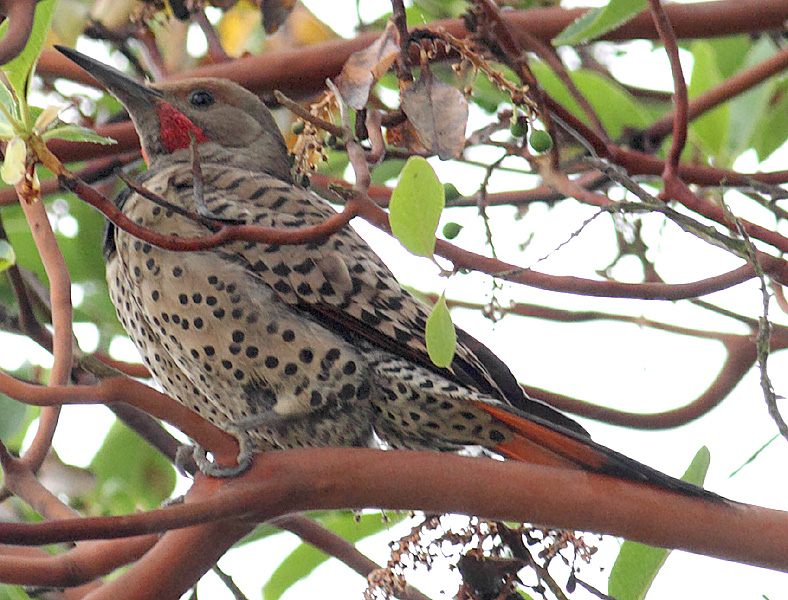
Red-shafted Northern Flicker; Seattle, WA; July 2013
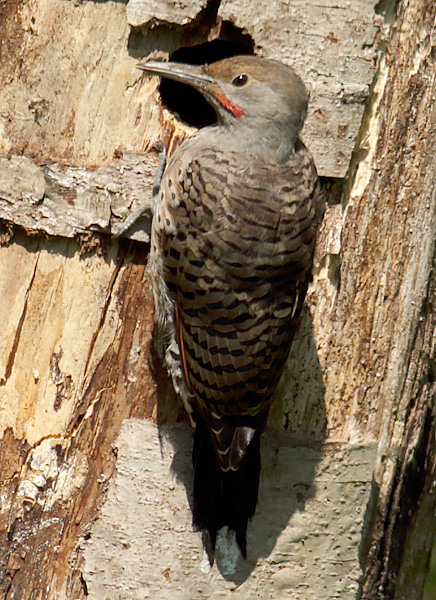
Red-shafted Northern Flicker; Carnation, WA; August 2015
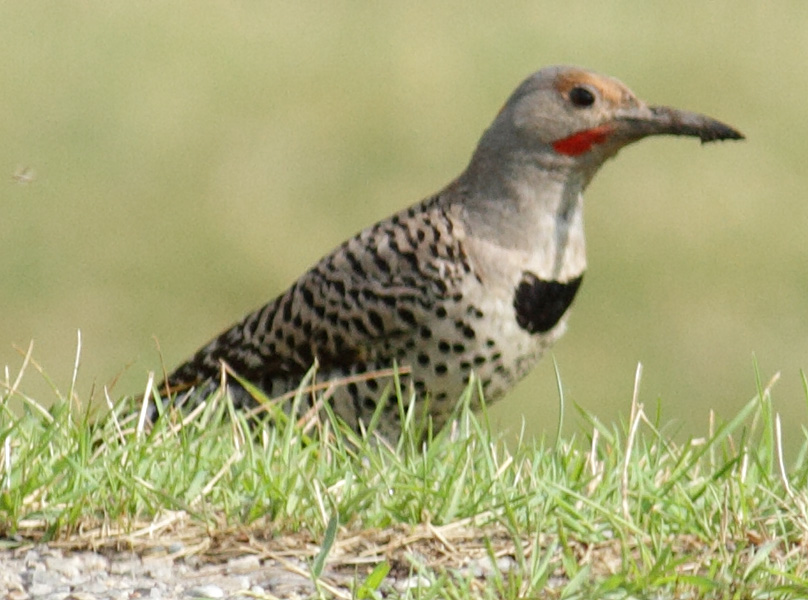
Red-shafted Northern Flicker; Calgary, AB; July 2013
The Arizona Flicker is clearly in the red-shafted zone, and note how red its malar is. Seattle and Carnation are in the intergrade zone, and one Flicker has a red malar like that of the Arizona Flicker, and the other one has a salmon pink malar. The Calgary Flicker, also in the intergrade zone, has a salmon pink malar and what looks to be yellowish wing feathers.
So side by side, here's a comparison of one of the photos I took yesterday, and another photo from Seattle in the intergrade zone.
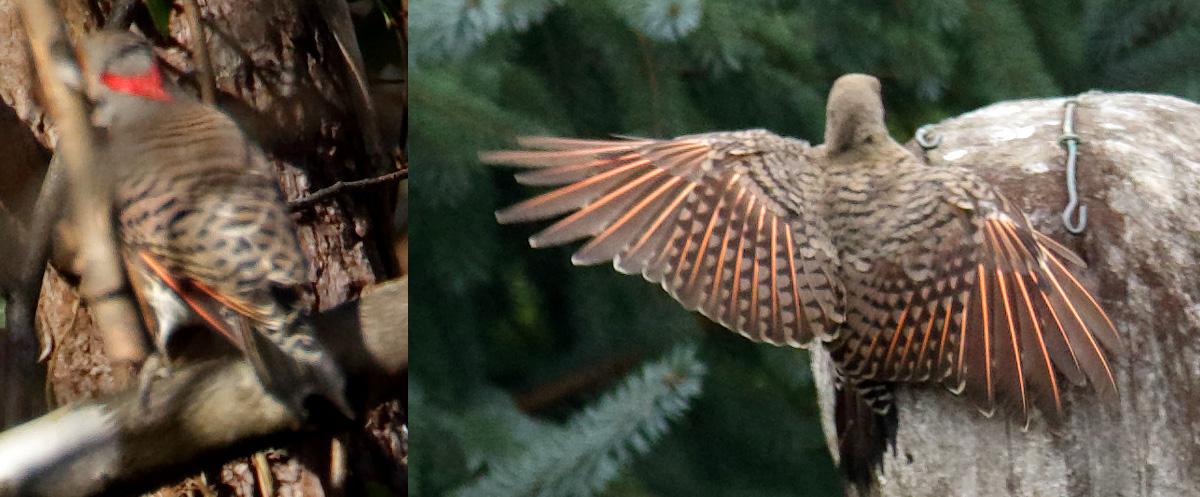
Crozet (left); Seattle (right)
Does the copper/salmon pink color look the same or different to you? Looks the same to me. Without a DNA sample, how can one know for sure?